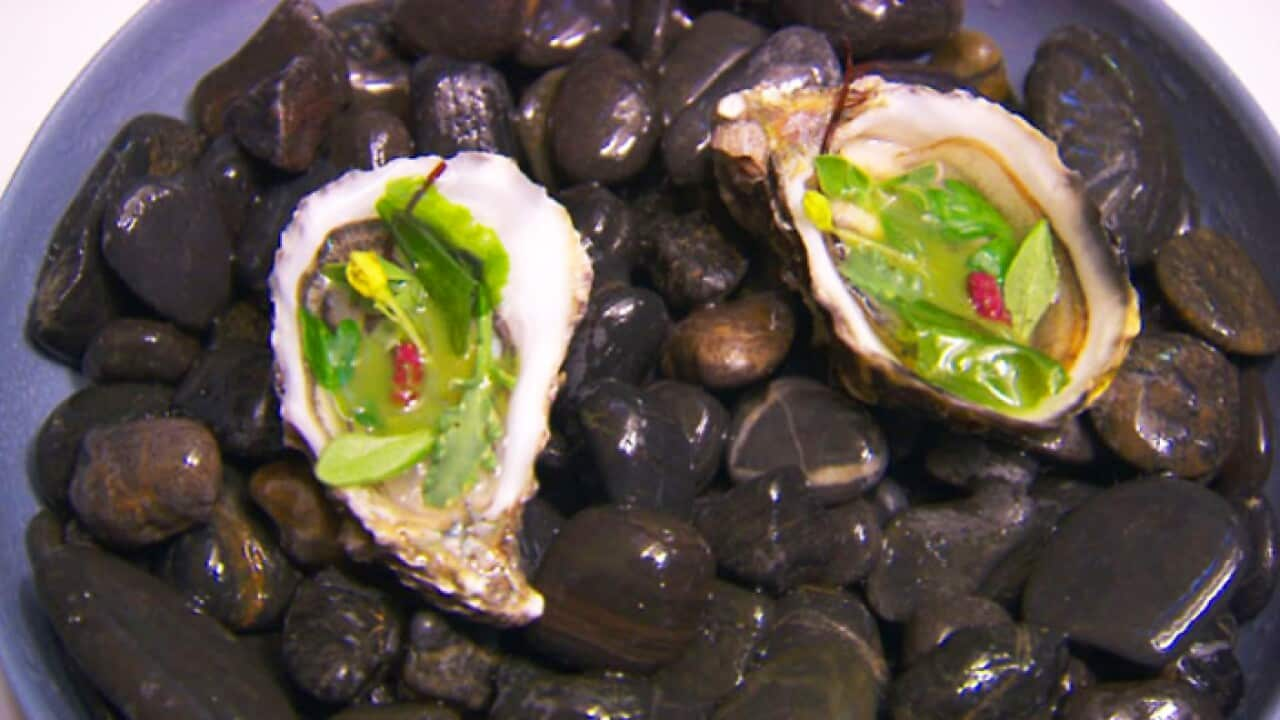serves
2
prep
50 minutes
difficulty
Mid
serves
2
people
preparation
50
minutes
difficulty
Mid
level
Ingredients
Pickled lemon peel
- 1 lemon
- 12 g table salt
- 20 g caster (superfine) sugar
Succulent juice
- 150 g wild sea succulent, washed, picked
- 5 ml lemon juice
- pinch of caster (superfine) sugar
- 8 live oysters, unshucked
- 8 leaves hairy weed
- 8 leaves dune spinach
- 8 leaves beach mustard
- 8 leaves sea parsley
- 8 leaves sea lettuce
- 8 flowers dune spinach
- 8 salt berries
- 8 slithers pickled lemon peel
Drink Oliver’s Taranga Vermentino 2012, McLaren Vale, SA
Instructions
To make the pickled lemon peel, using a very sharp slicing knife, cut a thin layer of peel from the lemon (reserve the lemon for another use). Cut this into very thin strips and lay on a small stainless steel tray. Sprinkle over the salt, followed by the sugar. Leave to cure for 30 minutes. Wash the peel in cold water and pat dry with paper towel.
The succulent juice should be made to order. Using a twin-gear juicer (wheatgrass style), juice the sea succulent and pass the juice through a sieve lined with muslin (cheesecloth). Add the lemon juice and pinch of sugar, to balance out the saltiness.
Shuck the oysters and gently cut the muscle to release the oyster.
To serve, arrange the succulent flowers, leaves and sea vegetables on top of the oysters. Place a piece of pickled lemon peel on each oyster. Pour over the succulent juice.
Note
• All of the succulents and sea vegetables should be wild, as cultivated varieties lack any real flavour and texture, and should be picked on the day you serve them.
Cook's Notes
Oven temperatures are for conventional; if using fan-forced (convection), reduce the temperature by 20˚C. | We use Australian tablespoons and cups: 1 teaspoon equals 5 ml; 1 tablespoon equals 20 ml; 1 cup equals 250 ml. | All herbs are fresh (unless specified) and cups are lightly packed. | All vegetables are medium size and peeled, unless specified. | All eggs are 55-60 g, unless specified.

